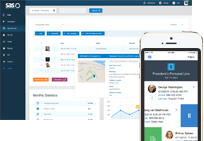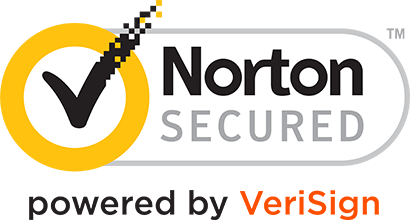- Log In
- Support
- Company
- Contact Us
- Live answers @ 1-888-532-4794
Directing customers to use the right service channel.

With a proliferation of self service channels such as the web, mobile and kiosks – all of which are often managed by contact centers – it is important that customers must be guided, albeit subtly, to choose the right service channel so as to manage the costs of multichannel interactions. Often, customers have a preferred service channel and migrating a customer to a new channel can be a painful process for both the customer as well as the company. However, it does have long term rewards and is well worth the effort.
Years ago, companies used to have a single direct channel of delivery for their customers. Then the “call center” came into being, initially as a complaint resolution mechanism, and later on as a service delivery channel itself. Today, companies use multiple routes to reach out to demanding customers and studies have shown that revenues from multichannel customers are typically 30 percent higher than single channel methods. Moreover, channels such as the web and call centers offer big cost savings when compared to a direct channel such as a bank branch.
Sometimes though, introducing multiple channels of service delivery can raise costs as customers increase their number of transactions. For example, a customer who would earlier check his account balance once a month when he visits the bank branch may now start doing so every other day through the Internet. Thus, although the average transaction cost may come down, the overall cost of serving each customer goes up. Companies cannot risk cutting down on the number of service channels as customers who are accustomed to the wide range of service options may look at it as a drop in service levels and may even switch to a competitor if a channel is discontinued.
The answer therefore lies in being able to reroute customer interactions in such a way that customers choose different channels for different interactions, enabling the company to match the customer choice with channel economics. This will not only contribute to cost savings and revenue enhancements, but also allow companies to break into previously untapped market segments.
Proactive intervention.
While a company can offer multiple service delivery channels, it is also necessary to proactively intervene to identify the channel of choice for each transaction. This aids in controlling costs and boosting revenue. For example, a company may need to choose between direct face to face interaction with a salesperson, or an outbound telesales call center, for different legs of the sales process. While a telesales channel may be best suited for generating leads, a direct meeting with the customer may help close the sale faster. Similarly, a premium customer may prefer speaking in person to a customer service agent rather than interacting with a cumbersome IVR system. Companies need to strategize their interactions by keeping in mind customer preferences and channel economics. A suitable incentive structure for both customers as well as staff can be designed to influence the behavior in a way that is optimal for the company.
Designing the channel architecture.
Often companies have only a vague idea of the transaction volumes and revenue from each of the service channels. When it comes to other factors such as cost of service, customer preference or perceived quality of each channel, most companies are mostly in the dark. The first step in designing a robust and profitable channel architecture is to segment your customers based on their preferred channel of service, understand the current transaction mix of each channel and the cost of each activity (such as cost of lead generation and cost of closure rather than just cost of acquiring a new customer) in each channel.
Once a one to one comparison of costs and revenue is made, companies can also analyze the quality of customers that each channel attracts. For example, a telecom company may realize that the cost of acquiring a customer may be same across channels, but customer profiles may differ drastically in terms of average revenue realizations (more commonly known as ARPU or Average Revenue Per User) and loyalty levels.
Data analysis at a granular level is an essential step in creating channel architecture for a multi-channel service organization. However, cost and revenue figures are only one part of the equation. An equally important parameter is the customer preferences. Customer preferences also vary from transaction to transaction. Thus, a customer who might choose a website to verify his account balance may opt to visit the branch for a transaction rather than do an online transfer. Analyzing cross channel customer behavior patterns can provide key insights into customer loyalty as well as cross sales opportunities. In depth statistical analysis can help identify the most preferred channel combination for each class of customers.
Combining insights from the economical analysis and the customer preferences could help companies in enhancing revenue and controlling costs without affecting customer satisfaction levels.
Incentivize the right choice.
One of the best ways to encourage customers to migrate from one channel to another is to incentivize the right choice. Incentives typically have a positive benefit (such as financial discounts or improved customer service) associated with the right channel and a negative outcome (such as additional fees or delayed service) associated with all the other channels for a specific transaction. The negative outcomes are typically opaque and work best in transactions where switching costs are high. For example, an airline who wants to encourage self-service check-ins would typically have more self service kiosks than counters manned by staff. This would enable customers to have shorter wait times if they opt for the kiosks and longer wait times while utilizing the manned counters.
In some situations, companies may need to guide different customer groups to different channels for the same transaction. This is trickier than a uniformly preferred channel for all customer types; but nevertheless, companies have still managed to achieve this. For example, a credit card company may offer direct access to a customer service representative for its platinum level customers while all the other customers are expected to navigate through an IVR menu before they can speak to a agent. On the other hand, it might offer the same convenience over the Web for all customers. As a result, the credit card company would be able to provide personalized service to its most valued customers while the others automatically opt for the faster Web based service.
Often, encouraging customers to switch service delivery channels requires handholding by staff. This means that even staff would need to be incentivized to help customers choose the right channel. For example, if a company wants to use telesales for lead generation and their sales team for only sales closure, then it needs to reward the telesales team based on the number of leads generated, while rewarding the sales team based on the number of closures achieved. Incentives may need to be redesigned to ensure that there is no sudden dip in compensation for either group of staff.
Change management.
Another key aspect for a successful channel migration is to have a well planned “change management” strategy in place. Even if the channel migration strategy is well thought out and in alignment with the customers’ choice of channels, it can be counterproductive if customers perceive a drop in service levels in the new channel. There are three things to keep in mind to ensure that the channel migration is smooth:
- Time it Right: It is easier to introduce a new channel when the demand for your service is strong and your competitors are weak. If your existing channel is overcrowded, that is also a good time to introduce a new channel. Try to offer some form of continuity to your customers, so that they easily migrate to the new channel. For example, if you have always used direct sales people and now want to move to telesales, you can use the same sales people to man telesales for the initial few weeks so that customers can talk to familiar personnel.
- Reduce the Risk of Failure: Once the channel migration strategy is in place, a company needs to ensure that there are adequate safety provisions such as trainings and pilots to reduce the risk of failure for both staff as well as customers. For example, customers may want the option to switch back to the old service channel, in the event they are not satisfied with the new one. Trainings and hand holding during the process would dramatically increase adoption rates in the new channel. For example, if you are attempting to migrate customers from a call center to a Web based service, it would be a good idea to offer customers the choice to place a call to the call center and have a customer service executive or an automated voice over guide them on how to execute the transaction on the Web. When migrating customers to a new channel, a phased approach is often a better strategy as it will help to iron out any initial hiccups in process flow, before things get ugly.
- Communicate the Change: Having an effective communication strategy is an essential part of enticing customers to try the new service delivery channel. Customers are more likely to use a new channel if a company manages to create a buzz around it by highlighting the advantages of the new channel. This can be done either through the existing service channel (for example, by having your telephone answering service ask the customer, “Have you tried our Website for checking your account balance? It is twice as fast.”) or through media advertisements. Client testimonials are also a great way to encourage trials of the new channel. While informing customers may be the primary focus of your marketing team, note the importance of internal communication as a key element in the change management process. See to it that your agents are well informed and comfortable with the change in roles, incentive structures, etc.
Multi channel service delivery is here to stay. However, companies can proactively manage this with the right strategy and change management roadmaps. A cleverly executed plan benefits both your customers and your staff, and will ensure that you get the most out of each channel.
Categories
- Advice (32)
- Answering Service 101 (18)
- Best Practices (10)
- Call Center Jobs (6)
- Call Center Software (20)
- Comparison (2)
- Customer Service (30)
- Funny (31)
- Holidays (19)
- Industry Hacks (19)
- Infographics (53)
- International (1)
- Medical (8)
- News (12)
- Phone Etiquette (2)
- Phones (14)
- Pricing (8)
- Quizzes (3)
- Receptionist (11)
- SAS Products (29)
- Scripting (4)
- Services (5)
- Small Business (25)
- Starting Up (7)
- Tips and Tricks (19)
- Uncategorized (1)
- Videos (19)
- Workplace (6)
Recently writen
- Call Center Script Best Practices: Advanced Script Block Tips to Optimize Your Answering Service
- January 2025 Release Notes – Adjustments to Call Details Timeline, New Scripting Updates, Live Transcription, and more!
- April 2024 Release Notes – Voicemail Greetings, Ability to Access Websites With a Username and Password, and more!
- March 2024 Release Notes – New Add-On, Settings Revamp, and more!
Follow Us
How about a demo?
We'll show you how our web portal works and answer any questions you have about SAS.
Schedule a demo







